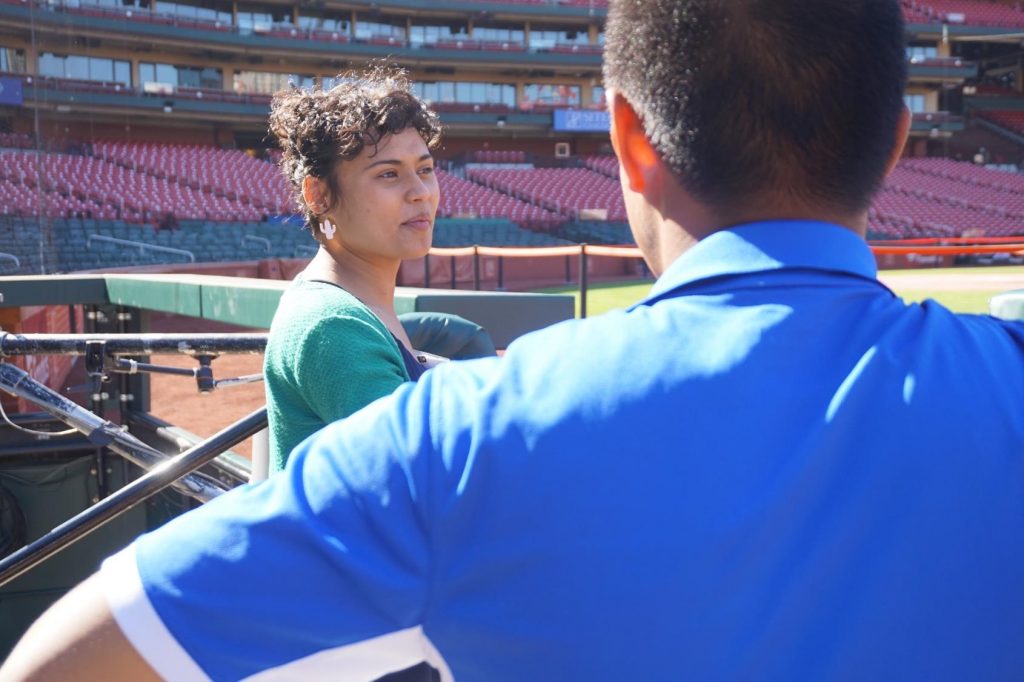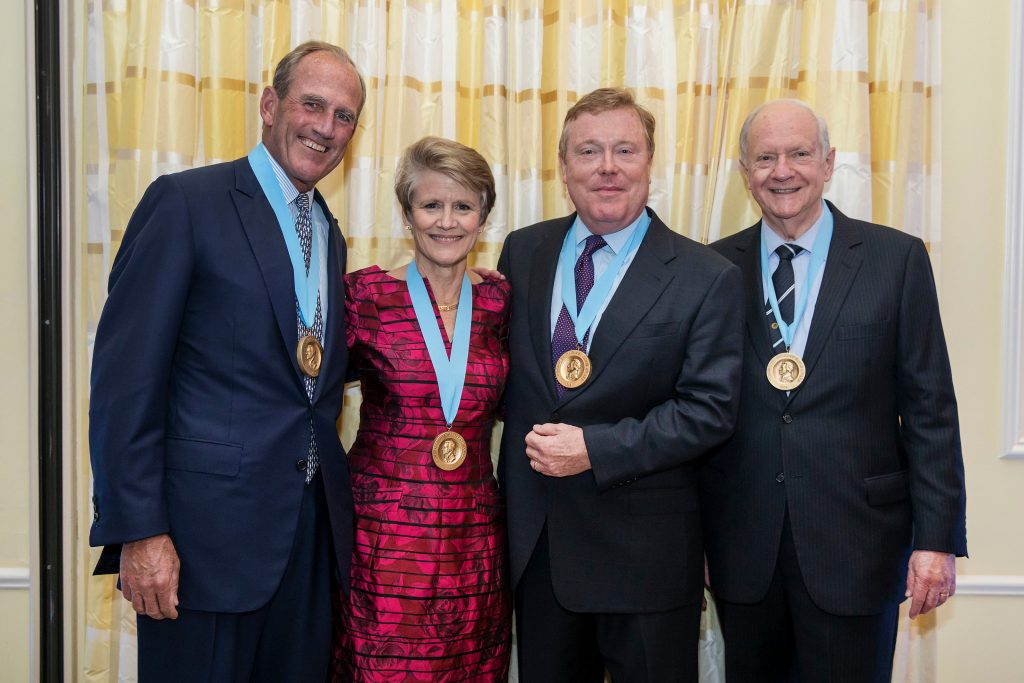A giant snake pendulum that will be on display in front of Phillips Hall for Arts Everywhere Day April 7 is a perfect mashup of art and science.
The 8-by-11-foot kinetic sculpture is the brainchild of mathematics department chair Rich McLaughlin and physics and astronomy department chair Christian lliadis in the College of Arts & Sciences. The weights at the end of the pendula are 6-pound Carolina blue shotputs.

When the 17 pendula of different lengths are released simultaneously, they create an undulating pattern that looks like a slithering snake. The pendula then disengage and swing in separate patterns before coming together again in a large wave. The cycle — which is hypnotic to watch — takes about a minute.
“The motion they make together is the artistic part, but underlying that, it’s all science,” Iliadis said. “It’s gravity, tension, energy, linear momentum, air drag, friction. You see symmetry, but where is the symmetry coming from? It’s all equations.”
The faculty members had the idea to scale up a small tabletop snake pendulum (with Carolina golf balls as weights) that sits on McLaughlin’s office desk. He has used that smaller version for several years in his Chancellor’s Science Scholars summer mathematics course.
On a recent Friday afternoon in the physics and astronomy shop on the first floor of Phillips Hall, Francesca Bernardi, a Ph.D. candidate in mathematics, and Dan Harris, a postdoctoral fellow in mathematics, worked to tune the pendulum. They used a metronome to help coordinate the release of the pendula, and iPhone and iPad cameras to examine the video of the wave movement frame-by-frame and make the proper adjustments. They drafted the plan several weeks ago, and shop manager Phil Thompson built the pendulum. Funds from Arts Everywhere supported the project.

Combining art and science has been a focus of his research throughout his graduate career, Harris said.
“Anyone who walks by and sees the pendulum will be intrigued by it, and that opens a door to a conversation about what makes it work — how changing the length of the pendula changes the frequency, for instance,” he said.
Bernardi agreed, and recounted an experience using the 3-D printer in the Hanes Art Center makerspace recently that led to a conversation about art and science.
“One of the people who worked there asked me details about our experiment. Art can be a way to make science more accessible to everyone,” she said.
One of the components of Carolina’s new “Creating Scientists” Quality Enhancement Plan focuses on integrating the arts and humanities with science courses to provide critical thinking skills and an understanding of the myriad ways in which science and culture are intertwined.
Duane Deardorff, director of undergraduate laboratories in physics and astronomy, said faculty members in the department use all kinds of visual elements as teaching tools.
“These things draw people in to ask: How does that work? I suspect we will be showing videos of the snake pendulum as well.”

The snake pendulum will also make an appearance at Phillips Hall at the UNC Science Expo on April 22.
Story by Kim Spurr, photos by Kristen Chavez, College of Arts & Sciences; video courtesy of department of mathematics




